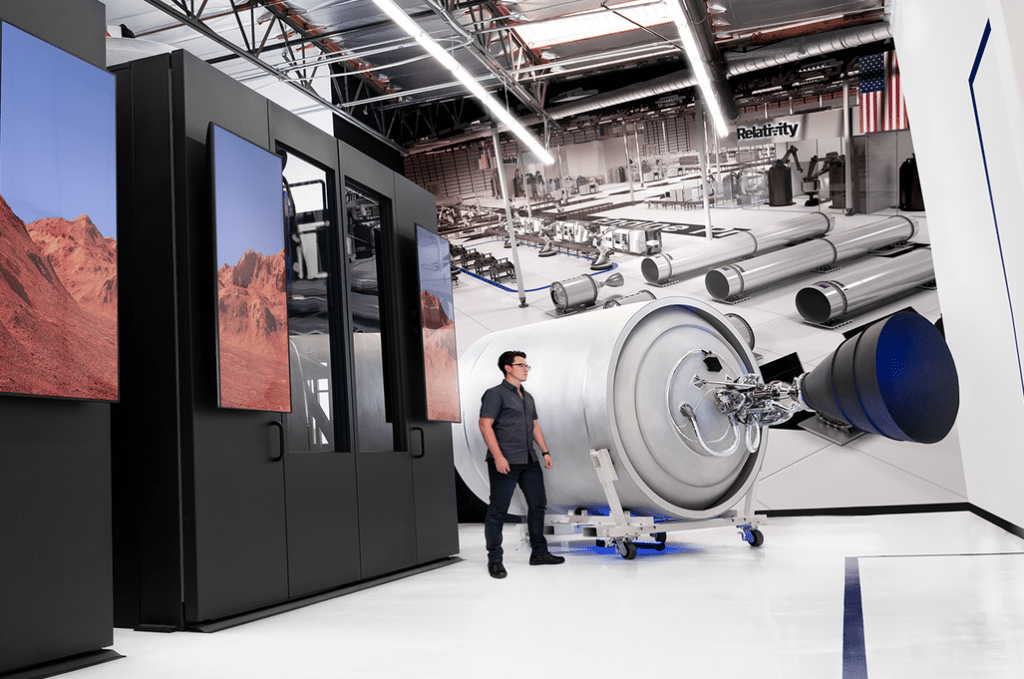When thinking about the future of technology one might be drawn to 3D printing, robotics, maybe space travel, but there’s one company that has thought of all three. Relativity has made a name for its unique style of rocket construction, by 3D printing them. A “factory of the future,” CEO Tim Ellis maintains the methods he introduced for rocket construction aren’t standalone but signal an industrial shift toward software-defined manufacturing. There are a number of factors that set Relativity apart from the competition. By 3D printing rockets, the company is removing much of the painstaking human labor constructing specialized parts for each launch and standardizing the process. In addition, Relativity has built its own 3D printers for their use. Taking other manufacturers out of the equation while guaranteeing the specs required for their build will be met. While their first orbiter is scheduled for launch later this year, Relativity is already changing the way we think about the manufacturing process.

If reinventing the rocket wasn’t a big enough idea, Relativity has the audacious goal to guide humans into the next stage of their planetary exploration. Like Elon Musk, founder Tim Ellis hopes to reach other planets using his patented technology. Moreover, he claims their method of additive manufacturing (3D printing) will be required for building in an environment with scarce resources, such as Mars. This is in line with Relativity’s success so far within the rocket manufacturing space. 3D printing has immensely lowered the cost of human labor as well as shortened the operation’s timeline considerably. As the process becomes more streamlined, Tim Ellis hopes that the company may be able to put rockets on the launchpad in 60 days from start to finish. An ambitious goal, given the often-multiple year process current rocket manufacturing employs.

With such a large product it is no wonder Relativity’s custom-built 3D printers can manufacture a single piece of metal up to 32 feet tall. Now that multiple iterations and test builds are behind them, Relativity is shooting for the end of 2021 or early 2022 as a reasonable launch time for their Terran 1 rocket. And if that wasn’t enough, Ellis unveiled plans to construct a recyclable rocket considerably larger than the first to rival Elon’s Falcon 9. One that could land, re-fuel, and launch again within a matter of hours or days. A likely requirement for inter-planetary travel. With these aspirations, this won’t be the last we hear from Relativity.